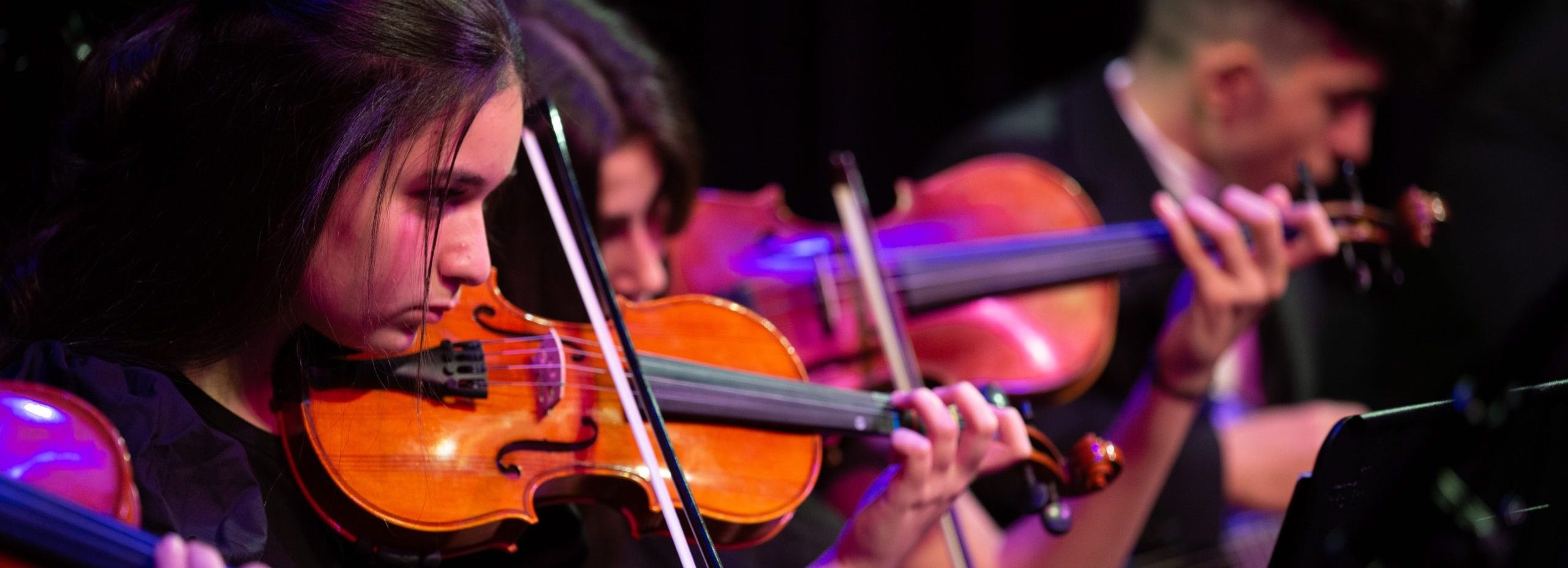COURSE DESCRIPTION
The course develops the rhythmic skills of the students using the Arabic music system and concept of rhythm.
Level 1: The course will emphasize the knowledge of the prevalent Arabic rhythms, basic technique of playing the Arabic drum, and practical skills in playing the main rhythmic patterns.
Level 2: The course will emphasize knowledge of a wide variety of Arabic and oriental rhythms, analyzing music in regards of rhythm and tempo, developing the student’s feel of rhythm and tempo through playing with instruments, a choir or a group, and playing more complex rhythmic patterns.
Level 1: The course will emphasize the knowledge of the prevalent Arabic rhythms, basic technique of playing the Arabic drum, and practical skills in playing the main rhythmic patterns.
Level 2: The course will emphasize knowledge of a wide variety of Arabic and oriental rhythms, analyzing music in regards of rhythm and tempo, developing the student’s feel of rhythm and tempo through playing with instruments, a choir or a group, and playing more complex rhythmic patterns.
The course develops the student's singing skills through the practice of songs from the Arabic classical and folkloric repertoires and/or the practice of western music vocal polyphony.
Level 1: In this level students will focus on the good use of their voice (the ability to sing in pitch), developing a good feel of rhythm and tempo through singing, practicing the major and minor scales and the basic modes of Arabic music, the focus on the folkloric repertoire and the simple genres of classical Arabic music.
Level 2: In this level students will focus on the main genres in Arabic classical music (Dor, Kasida, Mowashah, Taqtuqa) and /or will focus on repertoire of Western vocal polyphonic music.
Level 1: In this level students will focus on the good use of their voice (the ability to sing in pitch), developing a good feel of rhythm and tempo through singing, practicing the major and minor scales and the basic modes of Arabic music, the focus on the folkloric repertoire and the simple genres of classical Arabic music.
Level 2: In this level students will focus on the main genres in Arabic classical music (Dor, Kasida, Mowashah, Taqtuqa) and /or will focus on repertoire of Western vocal polyphonic music.
The course develops the student's skills and musical personality in group playing (Oriental groups ("al-Takht al-Sharqi"), string groups, wind groups, and orchestra).
Level 1: The course will emphasize basic techniques in ensemble playing, including: listening to others in the group, learning to follow the leader, learning to follow simple conducted hand signals in 2/4, 3/4 and 4/4 time (in the case of orchestral instrument players), learning when to start and stop playing and how to count rests and listen for entries, listening for correct intonation and correcting intonation problems, discipline within the ensemble, individual and collective responsibility for the musical result. The repertoire used for this level is usually significantly less technically difficult than that which the students play in their solo work, in order that more attention can be paid to issues of ensemble playing. Mainly each part will be played by several players, allowing students to help and support each other.
Level 2: The course will emphasize intonation; following the leader or conductor; listening within the ensemble; students tuning their own instruments; musical phrasing as an ensemble; dynamics and appropriate sound production; solo parts for individual players, increasing the responsibility on the individual player for the group result. Repertoire will again be somewhat easier technically than the solo work, but will be of a level intended to retain the student’s interest and a sense of challenge.
Level 3: The course will emphasize a greater degree of technical fluency and flexibility, creating a tight, co-operative and musically pleasing ensemble; basic techniques of leading, the importance of eye-contact with each other (and with the conductor in the case of orchestra); creating different sounds for different moods explored in greater detail than before, and a more sophisticated repertoire with greater variety. More responsibility is expected of individual students.
Level 4: The course will emphasize advanced repertoire; technical fluency in the instrument; good sight reading; increasing independence from tutors; ensembles finding their own voice and style; capacity for arranging music on their own (in the case of oriental groups).
Level 1: The course will emphasize basic techniques in ensemble playing, including: listening to others in the group, learning to follow the leader, learning to follow simple conducted hand signals in 2/4, 3/4 and 4/4 time (in the case of orchestral instrument players), learning when to start and stop playing and how to count rests and listen for entries, listening for correct intonation and correcting intonation problems, discipline within the ensemble, individual and collective responsibility for the musical result. The repertoire used for this level is usually significantly less technically difficult than that which the students play in their solo work, in order that more attention can be paid to issues of ensemble playing. Mainly each part will be played by several players, allowing students to help and support each other.
Level 2: The course will emphasize intonation; following the leader or conductor; listening within the ensemble; students tuning their own instruments; musical phrasing as an ensemble; dynamics and appropriate sound production; solo parts for individual players, increasing the responsibility on the individual player for the group result. Repertoire will again be somewhat easier technically than the solo work, but will be of a level intended to retain the student’s interest and a sense of challenge.
Level 3: The course will emphasize a greater degree of technical fluency and flexibility, creating a tight, co-operative and musically pleasing ensemble; basic techniques of leading, the importance of eye-contact with each other (and with the conductor in the case of orchestra); creating different sounds for different moods explored in greater detail than before, and a more sophisticated repertoire with greater variety. More responsibility is expected of individual students.
Level 4: The course will emphasize advanced repertoire; technical fluency in the instrument; good sight reading; increasing independence from tutors; ensembles finding their own voice and style; capacity for arranging music on their own (in the case of oriental groups).
OTHER AVAILABLE PROGRAMS



